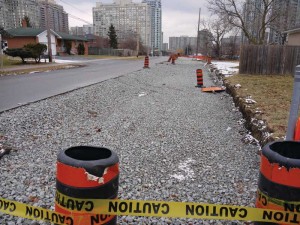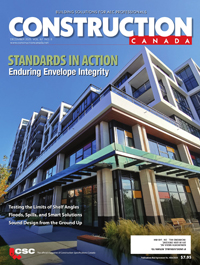Clean-water Technology: Low-impact development coming to a neighbourhood near you

Verifying design assumptions
Physical site inspection by engineers during design and construction is an overlooked aspect of LID. In addition to field-verifying assumptions of underlying soils, infiltration rates, and site drainage patterns for design, it is also important for the design conditions to be confirmed at construction by qualified engineers.
For example, an infiltration design may depend on excavation to a more permeable soil layer; in this case, the geotechnical engineer should provide sign-off to ensure the contractor has excavated to the appropriate soil layer.
The secret is in the soil
A critical, yet often misunderstood, component of bioretention practices is the engineered soil. This performs the role of filter, subsurface storage, and vegetation support. A leading cause of bioretention failures is soils too high in clay content. A strategy for getting the right soil to the site is providing a clear specification with desired grain size distribution and organic content. Suppliers new to mixing this type of soil must be informed well in advance of delivery as testing and refining a mix may take several weeks to months. Additionally, the construction documents should clearly state no bioretention soil should arrive onsite until the supervising engineer has received a satisfactory soil analysis report confirming the soil meets specification.
More than pipes and aggregates
Many LID practices involve use of vegetation, and planting design and establishment is an often overlooked component. These practices are different from conventional large end-of-pipe practices like stormwater ponds in that they are integrated into the urban form. They are located on private property, within right-of-ways, and in public landscaped areas. Therefore, plant selection and planting plans for these practices are essential both for function and for public perception and acceptance of LID practices in the landscape. Plants chosen must not only serve the stormwater treatment, evapotranspiration, and infiltration functions, but also be able to thrive in the unique hydrological conditions of LID and fit urban landscape esthetic standards.
Whenever possible, vegetated LID practices should be kept offline for at least the first year. This allows time for young plants to establish and fully vegetate the practice without being washed out or drowned. An offline practice is where the inlets can be closed or blocked off and stormwater flows can bypass the system. When placing a system offline is impossible, large mature plant stock should be used.
Alisha Chauhan, B.Sc., has been with Credit Valley Conservation (CVC) as a water resources specialist since 2008. As part of CVC’s Water Protection and Restoration Team, she works as a technical writer to communicate and promote the team’s sustainable technology projects to various stakeholders including community and government. Chauhan obtained her bachelor of science in biology and professional writing at the University of Toronto (U of T). She can be contacted via e-mail at achauhan@creditvalleyca.ca.
Robb Lukes, PE, M.Sc., has been with CVC as a sustainable stormwater management specialist since July 2009. His primary focus is on developing guidance, training, and demonstration projects for low-impact development (LID), and he also reviews new development and redevelopment stormwater management plans for consistency with CVC policy and LID initiatives. Lukes has degrees in water resources management from the University of Wisconsin (UW) and civil and environmental engineering from the University of Portland. Before joining CVC, he worked as an environmental engineer for the Low-impact Development Center in Beltsville, Md., where Lukes produced original research through stormwater modelling, project evaluation, and reviews of stormwater policy. He can be reached via e-mail at rlukes@creditvalleyca.ca.
Christine Zimmer, M.Sc.(Eng.), P.Eng., is the manager of water protection and restoration for CVC. She is responsible for developing tools, guidance documents, and providing assistance to stakeholders implementing LID practices in both new and existing urban areas. Zimmer and her team are also responsible for in-stream real-time water quality monitoring and monitoring of innovative stormwater technologies. Before starting at CVC, she obtained a master’s degree in water resources engineering from the University of Guelph. Zimmer was part of a research team funded by the Ministry of Environment and International Joint Commission (IJC) on LID. She can be contacted at czimmer@creditvalleyca.ca.
Jakub Wrobel, H.B.Sc., has been a water resources technician at CVC since 2008. His responsibilities include leading construction site supervision, documentation, and monitoring for various LID projects in co-operation with contractors, consultants, municipalities, educational institutions, and the government. Wrobel is also involved in education and outreach activities that target youth to teach them about their local environment. Before starting with CVC, he earned an honours bachelor of science in environmental management and geography from U of T. Wrobel can be reached at jwrobel@creditvalleyca.ca.
For more on clean-water technology, click here.







